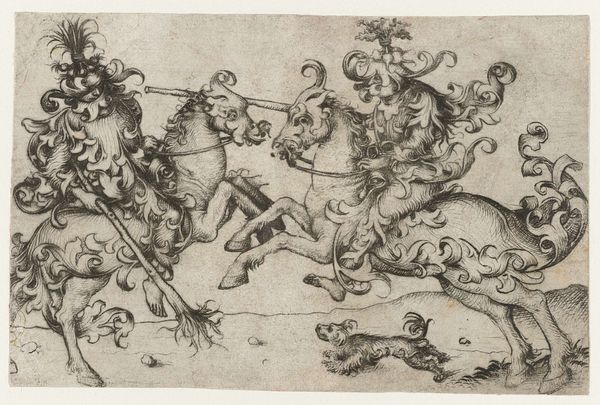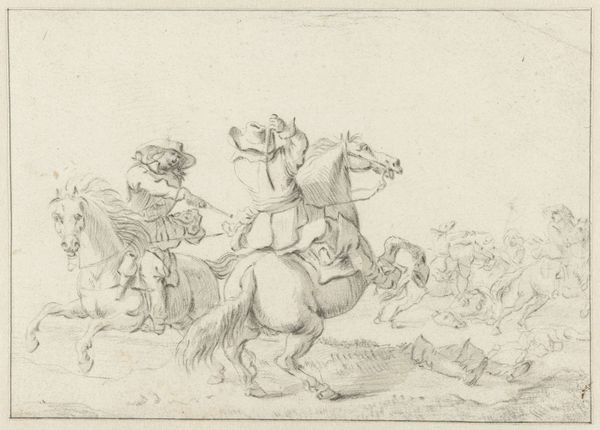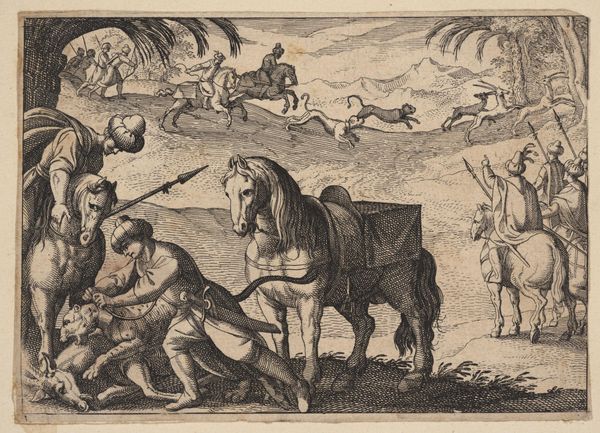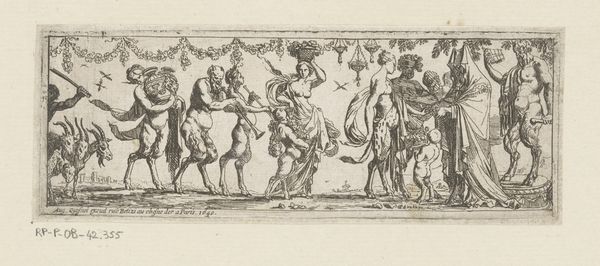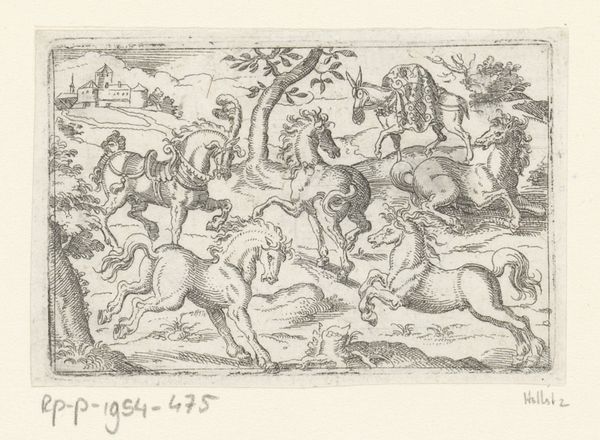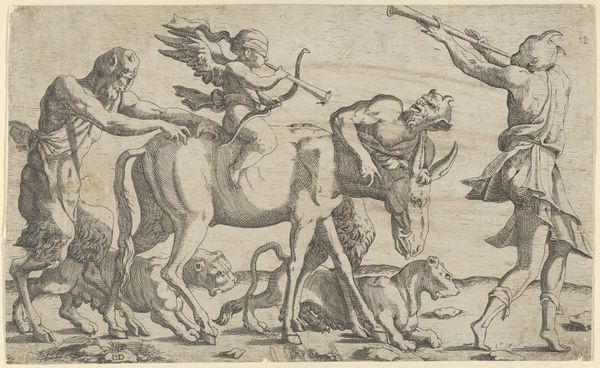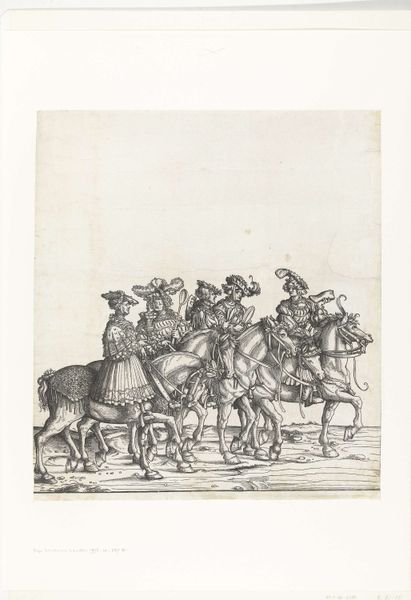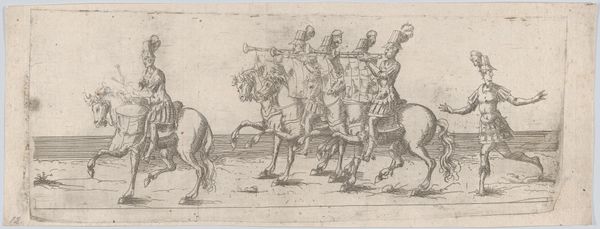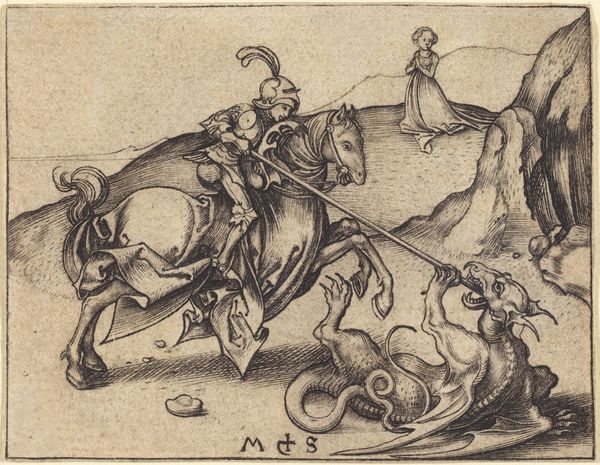
print, engraving
#
medieval
#
narrative-art
# print
#
figuration
#
northern-renaissance
#
engraving
Dimensions: height 150 mm, width 214 mm
Copyright: Rijks Museum: Open Domain
Editor: We’re looking at “Fight between Two Wildmen on Horseback,” an engraving by Israhel van Meckenem, created somewhere between 1455 and 1503. The sheer amount of swirling detail is overwhelming! What jumps out at you as you examine this piece? Curator: I find it interesting to consider what this engraving signifies in the context of the late medieval period. These aren’t knights in shining armor; these are wildmen, figures often associated with the untamed wilderness and popular folklore. Their appearance in a print like this signals the merging of elite courtly culture with more widespread, popular beliefs. What do you make of their ornate decoration, given they are supposed to be ‘wild’? Editor: That's fascinating. I wouldn’t expect 'wild men' to be associated with such detailed, almost theatrical armor. Does the medium—the fact that this is a print—influence how we understand the image's social role? Curator: Absolutely. Prints allowed for the relatively inexpensive distribution of images. Van Meckenem was a prolific engraver, catering to a growing urban class. This image would likely have been collected, perhaps even displayed. Do you think the "wildness" here might be more about fantasy and performance, a safe exploration of the "other" for a sophisticated audience? Editor: So, almost a form of early ethnographic display through art? A way to digest the unfamiliar within a controlled setting? Curator: Precisely. The image becomes less about actual "wildmen" and more about how urban society defined itself in relation to the idea of the wild, or the uncivilized. Editor: It’s a little unsettling how easily such images can reinforce existing power structures. Thanks, I had never considered prints in that light! Curator: Thinking about the power of reproducible imagery helps us understand art’s role beyond just aesthetics. The printing press truly democratized—and politicized—visual culture.
Comments
No comments
Be the first to comment and join the conversation on the ultimate creative platform.

